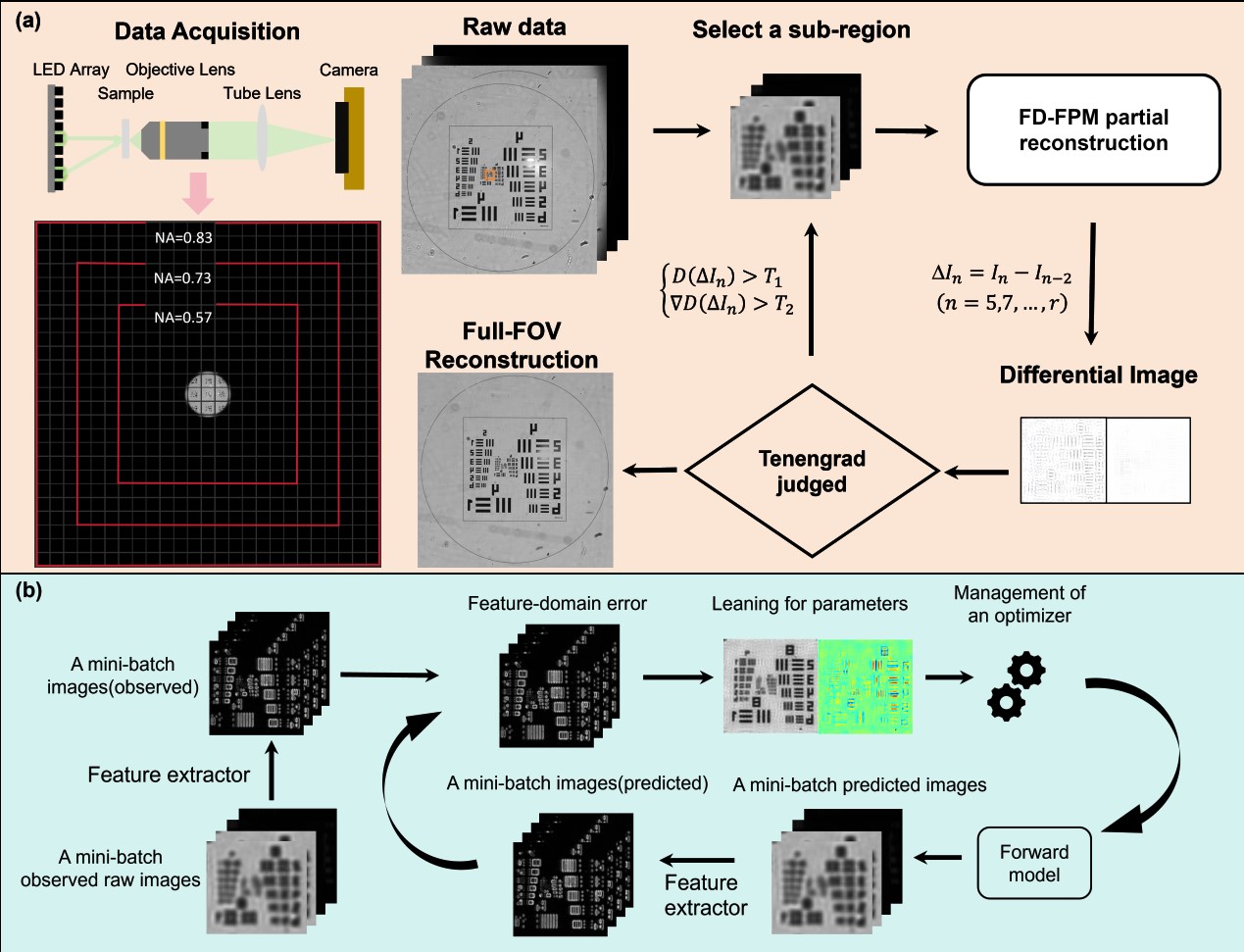Recently, a research group led by Dr. PAN An from the Xi'an Institute of Optics and Precision Mechanics of the Chinese Academy of Sciences, proposed a new adaptive resolution strategy to enhance the efficiency and performance of Fourier ptychographic microscopy (FPM).
The study was published in Optics Letters.
FPM is a high-resolution, wide-field imaging technique that synthesizes multiple low-resolution images to surpass the resolution limits of traditional microscopes, suitable for microstructure analysis in fields such as biomedicine and materials science. However, FPM faces challenges including high computational costs, sensitivity to noise, and the need for high-performance hardware support, which limit its popularity in real-time imaging and large-scale applications.
In this study, researchers significantly improved imaging efficiency in full-field reconstruction by adopting an adaptive resolution strategy. Specifically, when imaging the USAF resolution test chart and human red blood cell samples, compared to traditional methods, they saved approximately 76% and 89% of the time cost, respectively, while ensuring the resolution of the reconstructed images.
The research team used feature-domain Fourier ptychographic microscopy (FD-FPM) technology, combined with the Tenengrad method to evaluate the differential images during the reconstruction process. This method first reconstructs a selected subregion under the FD-FPM framework, and then determines the number of images needed by calculating a series of differential images between reconstructions, thus efficiently completing the full-field reconstruction.
Intelligently allocating resolution according to the specific characteristics of the sample, reducing the unnecessary number of images in the reconstruction process. This strategy not only optimizes the use of computational resources but also reduces time costs while maintaining high-resolution imaging, which is significant for FPM reconstruction on low-performance devices. Moreover, the strategy provides a new idea for automatically selecting thresholds for different samples in the future, hoping to achieve more accurate reconstruction.
This work is an idea generated in applied research, on the one hand, confirming that FPM technology can adjust the resolution linearly under a single objective without switching traditional objectives; on the other hand, it is committed to achieving adaptive resolution adjustment capability, thereby achieving a result similar to lossless compression, saving time and data storage space for computational reconstruction, and providing possibilities for remote consultation.

Fig. (a) Diagram of the adaptive resolution method procedures. (b) Flow chart for FD-FPM. (Image by XIOPM)
Download: